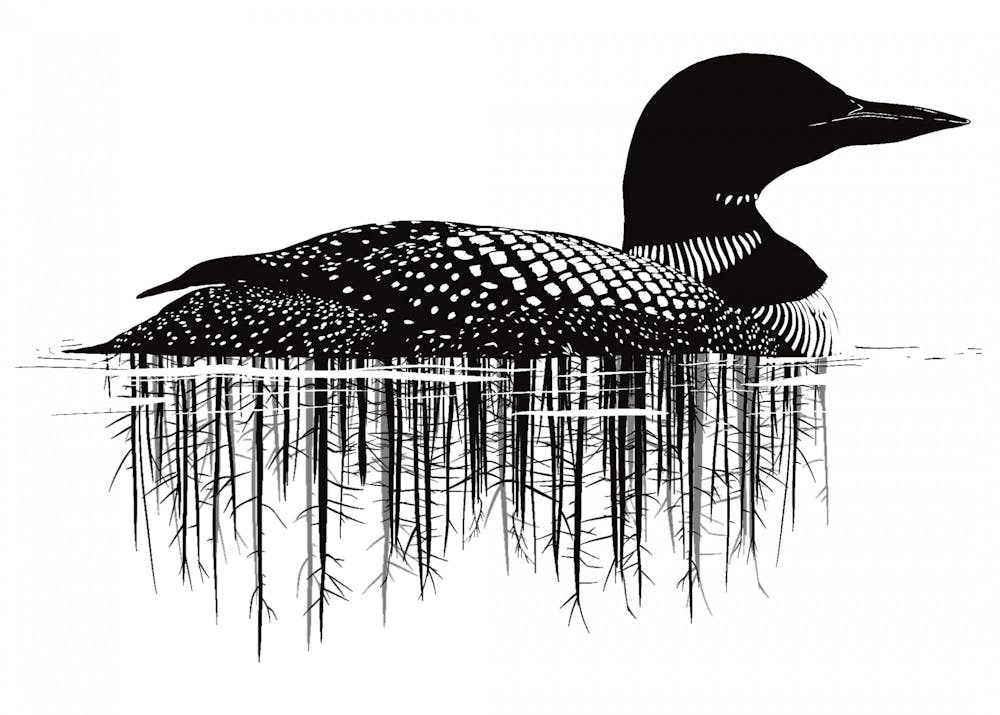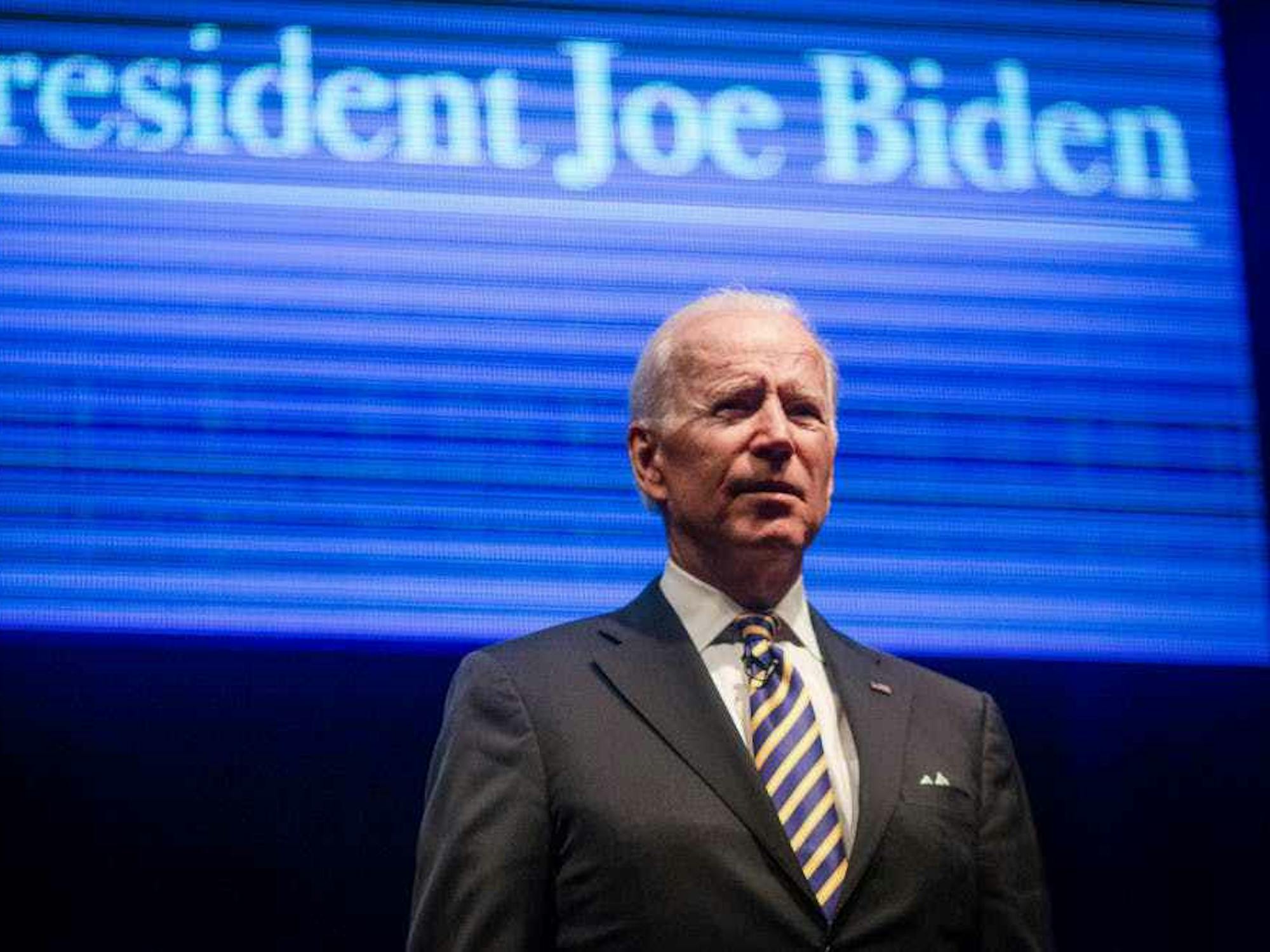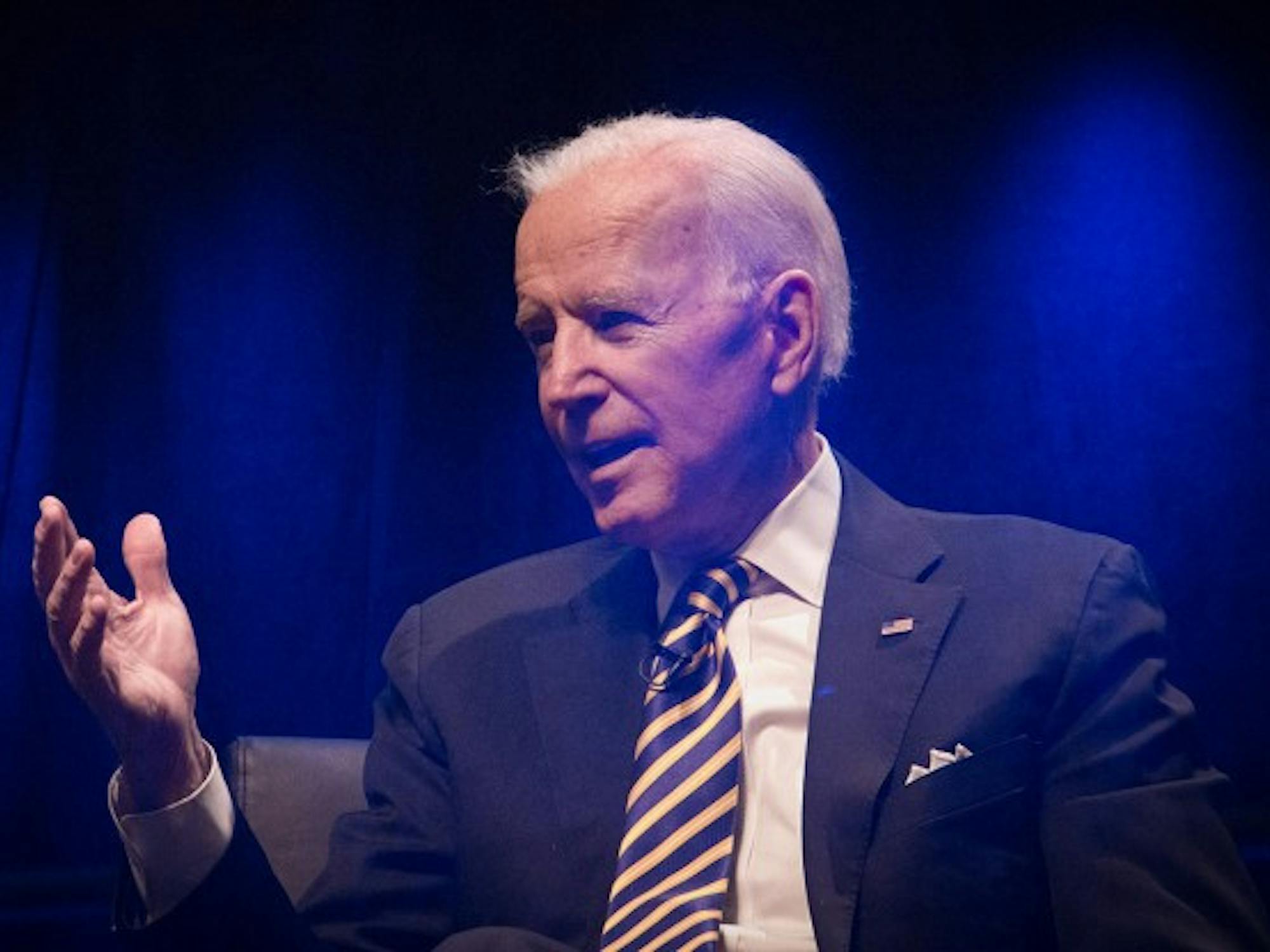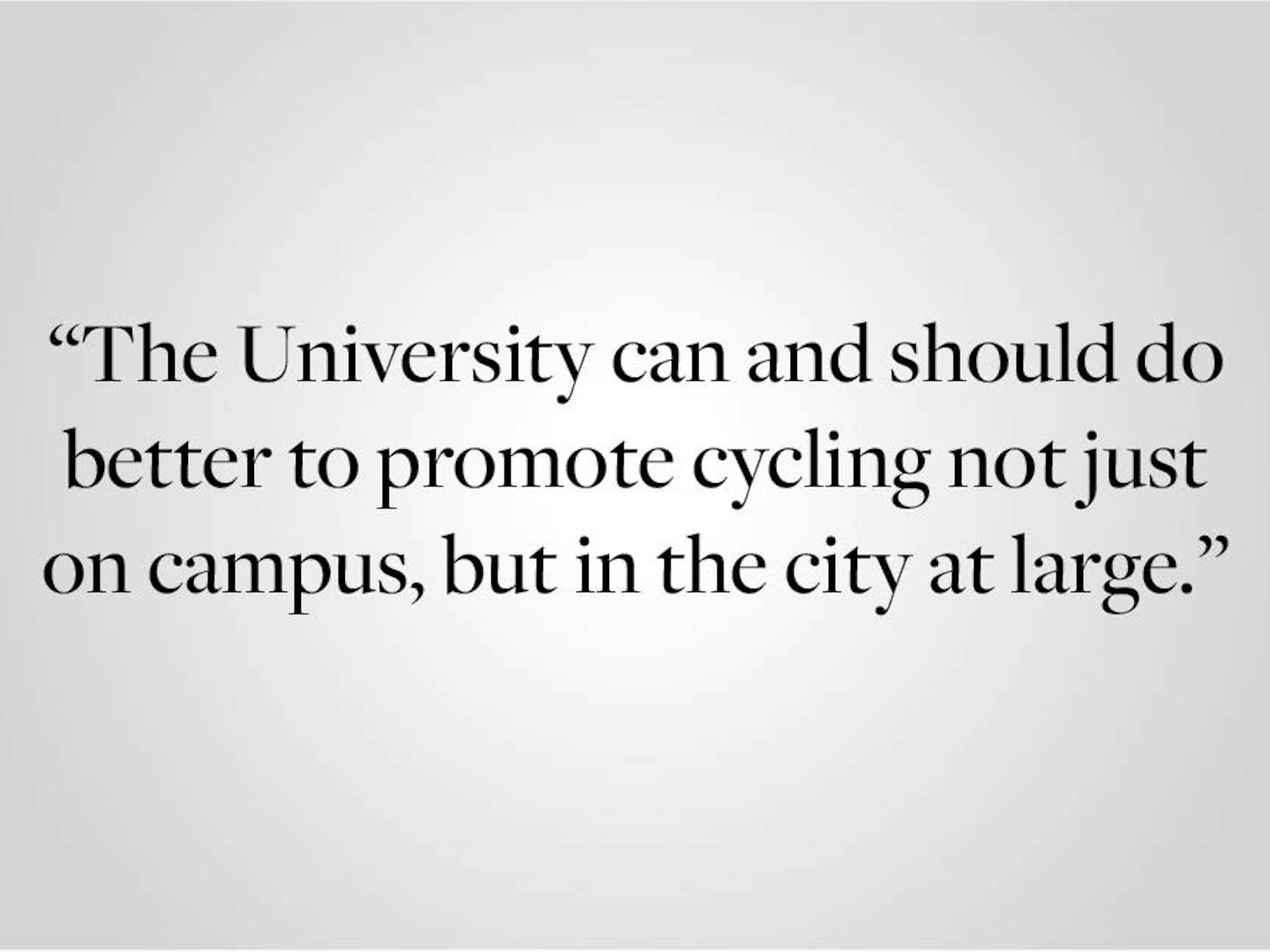I watch as the sun tucks itself into a small pocket of pines and steam off to the west, until it looks like a little light bulb held in a thin hand. I sit for thirty minutes or so until it has completely disappeared. It’s a new moon tonight and there’s cloud cover coming in. Soon, the night is so black I can’t see further than my feet—no city lights leak into the sky to cut the soupy darkness. The silence is even more total. There are no crickets, not this far north. It’s windless. No distant hum of planes or drum of wheels on the highway can be heard. I lie down on the coarse granite outcropping that serves as the loading pier for our two old vinyl canoes. In the pure dark, I get the feeling that I’m being swathed in a freshly laundered quilt, smelling of pine and the sweet musk of lake water.
Then, from out of the empty space in front of me, a loon’s warbling moan builds from a throaty chuckle into mournful song. It resonates into the stillness where the gradient world dissolves. Waveless, windless, starless night. The loon shatters that dark-nothing, adding more breath until its yodel falls into vast looping echoes, painting textures and distances on the black canvas before me. Echolocating with the song, the world that had disappeared the hour before reconstitutes itself.
I’m from Minnesota. For my entire life, I’ve gone north at least twice a year with my family and friends to the Boundary Waters Canoe Area Wilderness (BWCA), a 1.1-million-acre expanse of lake land that straddles the Minnesota-Canada border. The watershed, feeding into nearly 1,100 individual lakes in the BWCA, is vast and encompasses much of northeastern Minnesota.
Minnesota’s lakes and rivers have always been paradoxical historical entities. In the 18th and 19th centuries, they were simultaneously the primary mode of transportation and exchange in the region and the hard borders between states and Indigenous nations. They were sacred, life-giving sites which furnished plentiful fish and edible flora like wild rice and cranberries, sustaining Indigenous peoples and settlers alike. But they were also sites of death and extraction—battles were fought between colonial Americans and Indigenous tribes over waterway access, and on those won by the Americans, lumber and iron flowed like industrial lifeblood to the sputtering, smoking hearts of Minneapolis and Chicago.
Since the early 19th century, mining and logging companies have decimated much of the landscape west of Two Harbors, MN, polluting the water and clearing old-growth pine forests, of which only the “Lost 40” (acres, that is) in north-central MN remain. Since the BWCA was designated as a National Wilderness Area in the ‘60s, the number of resources that have been extracted from the region has sharply declined. But this is only true within the borders designated by the Wilderness Act. Outside of that border, but still within the watershed, mining and logging corporations are constantly seeking approval for permits that would prove catastrophic to the delicate ecosystem of the entire BWCA. Most recently, the Biden administration, through the Forest Service and Bureau of Land Management, ordered a potential halt to mining upstream of the BWCA that could last nearly 20 years. Chilean mining giant Antofagasta, which had originally been granted the go-ahead by the Trump administration, has since brought the case to federal court, already looking to overturn the administration’s decision.
The battle for the BWCA is ongoing, and sometimes I struggle to keep up my spirits, just as many do when they think about the impending climate disaster across the globe. I feel a particular, poignant fear when I’m missing home and loon song floats through my head. It serves as a reminder of the delicate beauty of Minnesota’s North Woods, and how that beauty is on the verge of being destroyed.
Like caged canaries in coal mines, loons will be the first to go. They’re a keystone species in boreal freshwater ecosystems because they help maintain a balance between predatory and non-predatory fish populations. They require clear, unpolluted lakes so that they can spot pike and muskie fry deep in the water and dive to catch them. They survive on a knife’s edge of balanced water turbidity and pH, which is constantly being put at risk of dramatic change by mining, logging, and damming corporations who want to access the material wealth in the region. It’s therefore impossible to ignore the warning contained in the loon’s cry—in the threat of its absence—a silence which tells of acidified waters that ruin fishes’ gills, dissolve eggshells, and leach toxic heavy metals from the rock. The song tells of a future where loons may not be able to survive, and the BWCA, as I and many others have known it, may lose one of its most defining features. Imagining this end makes me feel tired and disinclined to keep doing my part. I feel the same lethargy that many others do when faced by specific symptoms of climate change—why do anything at all, when it’s up to companies and government bureaucrats over which I have no control?
Donna Haraway, a radical feminist environmental thinker and author of Staying with the Trouble, which discusses the importance of decentering human progress narratives when thinking about the environmental crisis, reminds us of the danger of this sort of premature surrender. By constantly shifting our focus forward and fixating on an abstract idea of an “end” of natural beauty in the future, we distract ourselves from the immediate need to save that environment today. What loon song offered me in those numerous moments sitting and watching a pitch-dark night descend on a Minnesotan lake was a reminder to think beyond ways of imagining time and progress that dealt in strict beginnings and ends, and to instead think of our species as simply one of many “moral critters entwined in myriad unfinished configurations of places, times, [and] matters.”
Brown professor and environmental historian Bathsheba Demuth has noted in her research that the Industrial Revolution, along with things we would normally associate with it, like the construction of vast amounts of industrial infrastructure, also created a new sense of understanding time and humanity’s relationship to the natural world. Beginning in the 19th century, the conversion of natural landscapes into commodities such as lumber, coal, and oil enabled economists to “write new theories of time … in which objective laws moved human history” from barren subsistence “onward to the possibilities for growth, freedom, and plenty unleashed by industry.” This “march of progress” became a way of defining humanity as a category above or separate from nature. Humans controlled their destiny in the natural world by creating wealth and aspiring toward perfect economic systems that hinged on the commodification of nature to “make things of cultural value.” There’s a certain way in which natural places which remain largely untouched by human hands, like the BWCA, are therefore an escape from this kind of industrial time, a transportation to a different type of time-place or a different dimension where things don’t move in linear patterns, where temporality is more complex and layered. In those moments, when I’ve been listening to loons warble in the deep woods, my only way of understanding the world in front of me was mediated by their song. For just a few minutes, my understanding of the world, of time itself, was aligned with those small creatures.
Loons will most likely become extinct in the BWCA within our lifetimes. The demand for the resources contained there continues to grow, and frankly I don’t see those demands being ignored for much longer. Northern Minnesotan communities cry for the approval of logging and mining contracts that would provide them with some of the only well-paying jobs in the region. In my eyes, there is little hope to keep the BWCA pristine, and that’s not the fault of people who want to get a good job and feed themselves and their families, even if it’s at the expense of parts of a wilderness that I’ve come to love deeply. What I propose is that natural beauty, which for me is synonymous with loon song, can provide an anti-capitalist way of understanding time that may help a person interested in environmental activism overcome the lethargy created by imagined climate disaster. Because I’ve already begun to mourn the common loon doesn’t mean I should stop enjoying its song now, or that, if it finally becomes extinct, I should give up hope even then. The loon’s warbling tune will continue to reverberate in my heart forever, a reminder that I should keep fighting, that a wilderness that’s a little dirtied, or a little different from my perfect memory of it, is still one that will always be worth fighting for.





